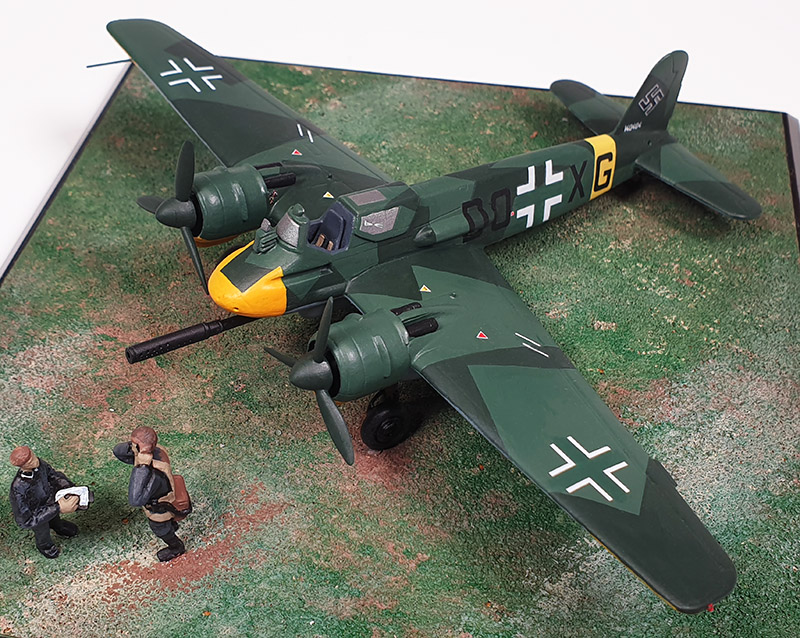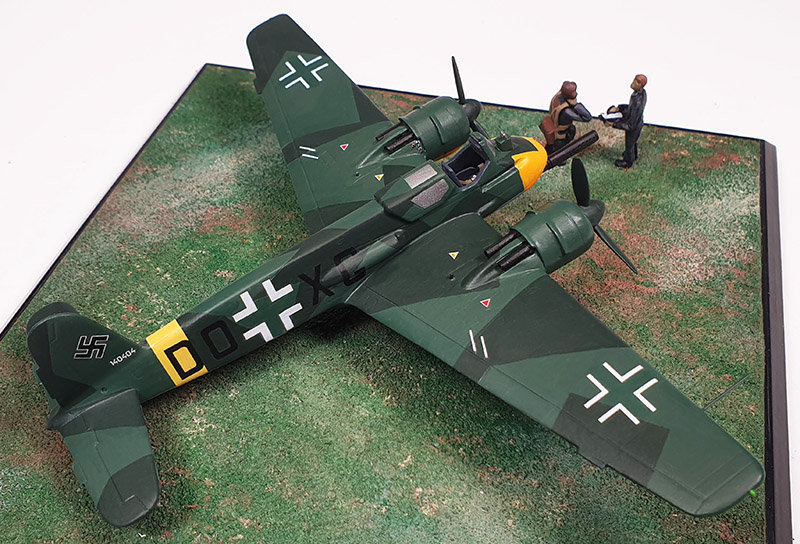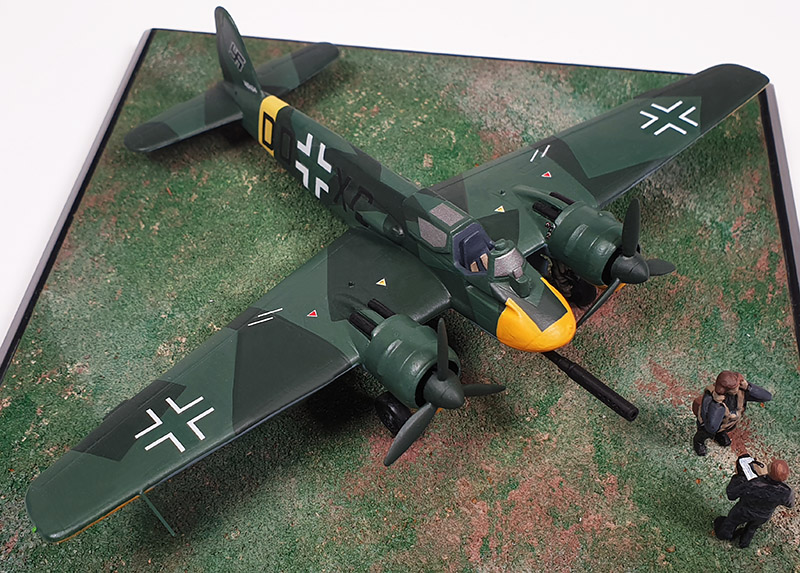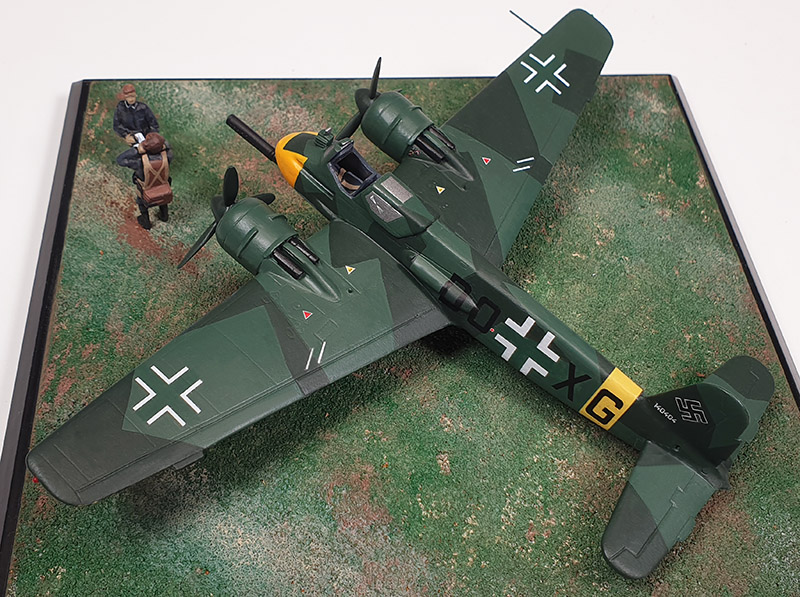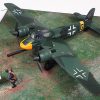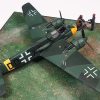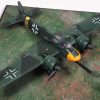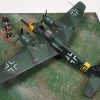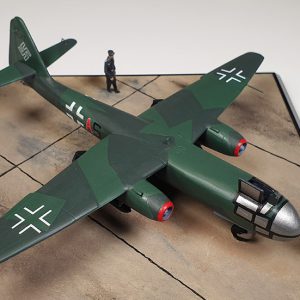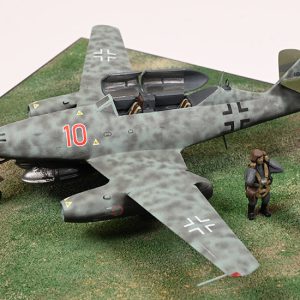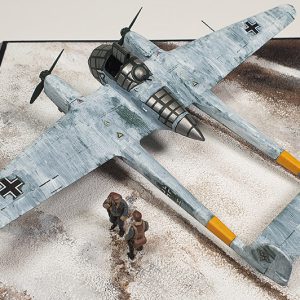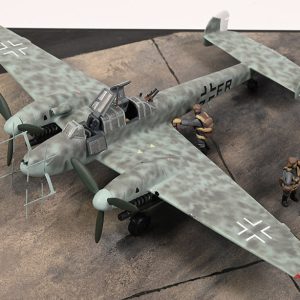Henschel Hs 129B-3 DO+XG Wrk Nr 140404
Erprobungstelle Rechlin, Waffenprufplatz Tarnewitz 1944.
Although a separate service, the Luftwaffe’s primary function at the outbreak of World War II was as a support for the German land forces; the two working together were the essential components of the Blitzkrieg, the “lightning war”. Validated by the campaigns in Poland and France, the ground attack role was well-established by the start of Operation Barbarossa, to the point where specially-designed aircraft equipped front-line units. Henschel’s Hs 123 biplane had been used in this role, serving with the Condor Legion in the Spanish Civil War; it had been designed as a dive-bomber, a function that was to be taken further by the Junkers Ju 87 Stuka, both these types being allocated to the role of close-support of armies in the field.
In 1937 the German Air Ministry issued a specification for a dedicated ground-attack aircraft, Henschel flew their prototype Hs 129 in May of 1939. Powered by a pair of Argus inline engines, this early version of the Hs 129 was armed with two 20 mm MG FF cannon and two 7.9mm MG 17 machine guns. The Hs 129s nose area, including the cockpit, was heavily armoured; room in the cockpit was so restricted that some instruments had to be placed on the inner faces of the engine cowlings. The A-series aircraft were underpowered, and after trials in the autumn of 1940 the type was rejected for service.
Henschel had already proposed a rather larger aircraft powered by two French Gnome-Rhone radial engines, and were now tasked with adapting the Hs 129 to take them; this needed only minor changes to the basic airframe, and the substantially increased power more than offset the greater weight. More glazing was added to the cockpit, and the MG FF cannon were replaced by MG 151s of the same calibre. Although the handling characteristics left something to be desired the first Hs 129Bs were issued to 4/Schlachtgeschwader 1 in January 1942 and sent to the Eastern front in May. Various modification kits, weapons in particular, were designed to be fitted to the aircraft as the need arose; typical of these was the R2, a ventral pack with a MK 101 30 mm cannon with thirty rounds for use as an anti-tank weapon, the role for which the Hs 129 is probably best remembered. The developmental changes applied successively to the B-1 were consolidated in the B-2 version.
Against an unexpectedly large number of Soviet tanks, the MK 101 proved less effective than had been hoped, and though improved 30 mm and 37 mm cannon were used, also in under-fuselage gondolas, a trial installation was made of the PAK-40, a 75 mm army weapon. With its feasibility proved an operational example was tested by Ekdo 26 against captured Soviet armour, and a “productionised” version fitted to the Henschel Hs 129B-3 with provision for twelve rounds of its 26 lb shell. Two dozen were produced at Schonefeld before the line closed toward the end of 1944.
140404 was built as a standard Hs 129B-2, but converted in June 1944 to carry the 75mm BK cannon. It carried the yellow “Eastern front” markings even though it was retained for trials at Rechlin and Tarnewitz of the bigger weapon, keeping its factory-applied code DO+XG.


